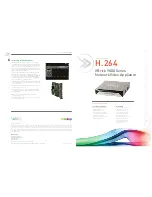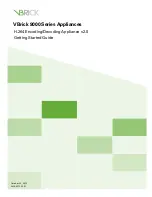
Section 2 Direct Excitation (Brush Type)
12
Diagnostic Repair Manual
Operation
Startup
When the engine is started, residual magnetism from the
rotor induces a voltage into (a) the stator AC power
windings, (b) the stator excitation windings. In an “on-
speed” (engine cranking) condition, residual magnetism is
capable of creating approximately one to three volts AC.
On-Speed Operation
As the engine accelerates, the voltage that is induced
into the stator windings increases rapidly, due to the
increasing speed at which the rotor operates.
Field Excitation
An AC voltage is induced into the stator excitation
windings. The excitation winding circuit is completed to
the voltage regulator, via the blue wires. Unregulated
alternating current can flow from the winding to the
regulator. The voltage regulator senses AC power
winding output voltage and frequency via the stator green
and white wires.
The regulator changes the AC from the excitation
winding to DC. In addition, based on the sensing signals,
it regulates the flow of direct current to the rotor. The
rectified and regulated current flow from the regulator is
delivered to the rotor windings, via red field positive wire,
and the positive brush and slip ring. This excitation
current flows through the rotor windings and through the
negative (-) slip ring and brush on white field negative
wire.
The greater the current flow through the rotor windings,
the more concentrated the lines of flux around the rotor
become. The more concentrated the lines of flux around
the rotor that cut across the stationary stator windings,
the greater the voltage that is induced into the stator
windings.
Initially, the AC power winding voltage sensed by the
regulator is low. The regulator reacts by increasing the
flow of excitation current to the rotor until voltage
increases to a desired level. The regulator then maintains
the desired voltage. For example, if voltage exceeds the
desired level, the regulator will decrease the flow of
excitation current. Conversely, if voltage drops below the
desired level, the regulator responds by increasing the
flow of excitation current.
AC Power Winding Output
A regulated voltage is induced into the stator AC power
windings. When electrical loads are connected across
the AC power windings to complete the circuit, current
can flow in the circuit.
Figure 1-4. Generator Operating Diagram
AUTOMATIC
VOLTAGE
REGULATOR
+
-
STATOR
EXCITATION
WINDING
STATOR
POWER
WINDING
STATOR
POWER
WINDING
MAGNETIC
FIELD
MAGNETIC
FIELD
SENSING
MLB = MAIN LINE
CIRCUIT BREAKER
ROTOR
TO LOAD
MLB
ENGINE -
DIRECT
DRIVE
120 VAC
120 VAC
240 VAC
















































